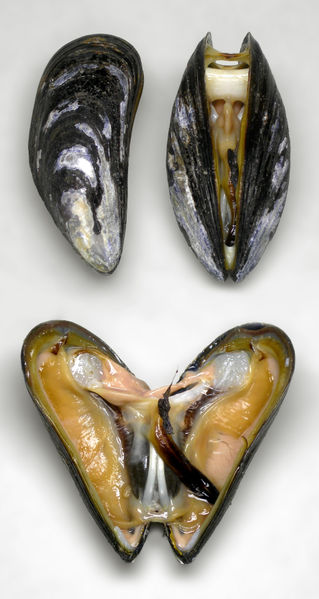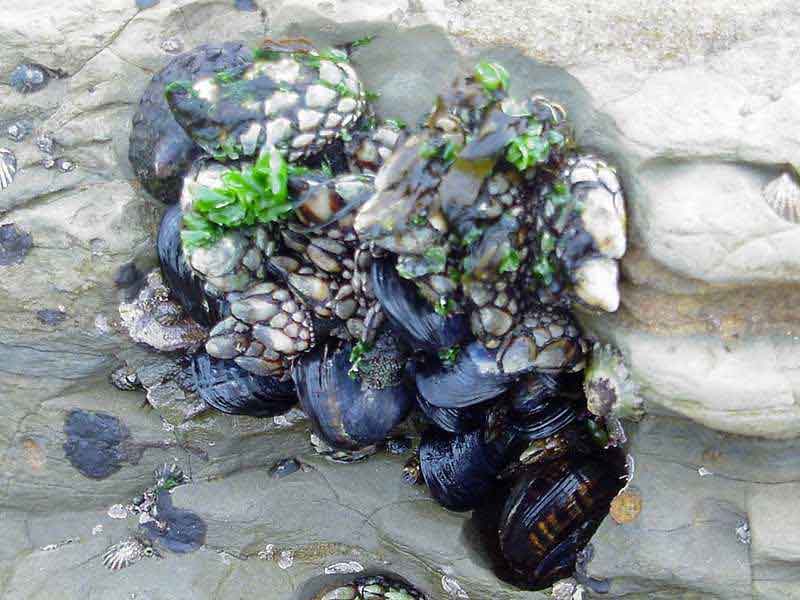|
There are 2 types of Mussels. Freshwater and saltwater Mussels. These two are not closely related.
Anatomy of the Mussel
The external shell is made up of two valves. These valves
are joined by an outside ligament. They are closed by strong internal muscles. The shells support protection for the soft
body inside.
The shell has three layers to it. Layer one, there is a layer of nacre which is made up of calcium carbonate.
Layer two, a chalky white cyrstals of calcium carbonate mixed with a protein of matrix. Layer three, is like the skin. It
is composed of a protein called conchin.
Mussels have a large organ called a foot. It varies from marine
and reshwater mussles. In freshwater mussels, the foot is large, muscular, and generally hatchet-shaped. It is used to pull
the animal through the substrate in which it lies partially buried. It also serves as an anchor.
In marine mussels, the foot is smaller, tongue-like in shape,
with a groove on the ventral surface. There is a pit, and in this pit, a viscous secretion is let out, entering the groove
and hardening gradually upon contact with sea water. This forms an extremely tough thread that secures the mussel to
its substrate.

|
| Shows different views and inside of a mussel |

Feeding
Both types of mussels feed on plankton and other microscopic sea creatures that are floating
around in the seawater.
The mussel carries water through one of its siphons. The water is brought to a chamber where
the cilia start to act upon it. The cilia is located on the gills. Its wastes exit through the other siphon. The labial palps
finally funnel the food into the mouth where it can digest.
Habitat
Sea water mussels are found in low and mid temperatured waters.
Some mussels prefer quiet, calm waters, while others like it where the rough waves roll.
Freshwater mussels on the
other hand, are found in lakes, canals, streams and rivers near the polar regions. They like clean water with substantial
mineral content. This allows them to build up their shells with the calcium carbonate in the water

|
| Shows mussels sticking to a substrate |
|

